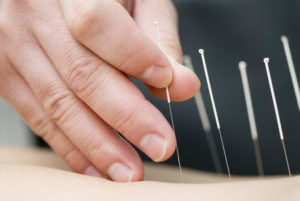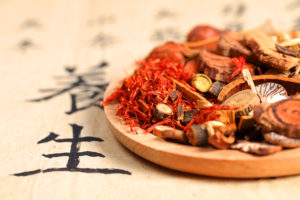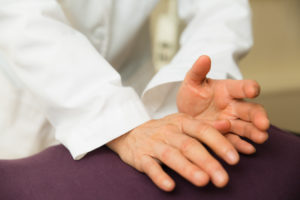Services
At Acupuncture TCM Wellness, Chao’s aim is to solve the underlying cause of your problems – not just the symptoms. We treat issues of all types, including:
Pain – headaches, neck and shoulder pain, frozen shoulder, sciatica, back pain, tennis elbow, osteoarthritis, knee pain, ear, nose, and throat disorders, toothache, earache, sinus inflammation, nasal inflammation or dryness;
Respiratory disorders – coughs, bronchial asthma and wheezing, allergic rhinitis (hay fever);
Gastrointestinal disorders – digestive tract problems, hiccups, GERD, irritable bowel syndrome (IBS), constipation, diarrhea, dysentery caused by certain bacteria;
Nervous System and Muscular Disorders – facial paralysis or nerve pain, partial weakness after a stroke, inflammation of nerve endings, bed wetting;
Gynecological disorders – PMS, dysmenorrhea, irregular menstruation, morning sickness, menopausal/premenopausal syndromes, amenorrhea, endometriosis, uterus fibroid, infertility, birth induction, reverse breech baby; and,
Palpitation, anxiety, depression, stress, jaundice, urine retention, edema, arthritis, diabetes, impotence, dizziness/vertigo, arthritis, diabetes, fatigue, and more
Acupuncture is the most well-known TCM treatment modality in the West, in part because of its many advantages: it provides drug-free pain relief and effectively treats a wide range of acute and chronic ailments.

Acupuncture takes a holistic approach to understanding normal function and disease processes and focuses as much on the prevention of illness as on its treatment.
Qi, and the way it affects the body, is at the core of this approach. When healthy, an abundant supply of qi (life energy) flows through the body’s meridians system – a network of channels through the body. If the flow of qi in the meridians becomes blocked or there is an inadequate supply of qi, then the body is unable to maintain harmony, balance and order, and disease or illness follows. This can result from stress, overwork, poor diet, disease pathogens, weather and environmental conditions, as well as other lifestyle factors and is evident to TCM practitioners through observable signs of bodily dysfunction. TCM practitioners look for these signs of health and dysfunction, paying particular attention not only to the presenting signs and symptoms, but also to the medical history, general constitution, as well as the pulse and tongue.
Acupuncture works through the insertion of
fine, sterile needles into acupoints along the body’s meridians. This clears blockages and stimulates the normal flow of qi through the body.
As a natural form of healing, acupuncture treats the underlying causes of disease and illness as well as the symptoms, providing a holistic approach to the treatment of disease and illness and linking body, mind and emotions. It is he most efficient and natural way of maintaining general well-being and of preventing against disease and illness.

Traditional Chinese herbology includes over 13,000 medicinals (including parts of plants, such as the leaves, roots, stems, flowers, and seeds, as well as animals and mineral substances) used in China and over 100,000 herbal formulas recorded in the ancient literature. In modern days, there are 300 substances commonly in use. The materia medica (the authoritative book on TCM medicinal substances) includes information on the traditional uses, dosages, drug interactions, contra-indications for each substance, as well as conventional medical research that has been published.
TCM categorizes medicinal substances according to their effects on particular vital substances, their resonance with particular zangfu (organ) systems, the channels of the meridian system into which the substance is to enter, and the pathogenic factors and patterns of disharmony they address.
Unlike western medicine and other forms of herbalism, Chinese herbs are often used in formulas instead of being used singularly in larger amounts. Formulas allow you to blend herbs to enhance their positive effects and reduce or eliminate any negative side effects they may have.
As with other TCM modalities, Chinese herbal formulas are prepared to match each patient and their signs and symptoms exactly. You should never attempt herbal treatment without proper training as some of the herbs are toxic and need to be prepared correctly, while others can have side-effects without being used in proper amounts or when mixed into inappropriate formulas. Chinese herbal formulas are mostly given as teas, capsules, liquid extracts, granules, or powders.
 Tui Na and acupressure are suitable for people seeking TCM treatment but who may be uncomfortable with needles.
Tui Na and acupressure are suitable for people seeking TCM treatment but who may be uncomfortable with needles.Tui Na is practiced in different ways, according to systems that emphasie particular aspects of TCM therapeutic principles. The main schools in China include:
-
Rolling method school which emphasizes soft tissue techniques and specializes in joint injuries and muscle sprains;
-
One finger pushing method school which emphasizes techniques for acupressure and the treatment of internal diseases,
-
Nei Gong method school which emphasizes the use of Nei Gong Qi energy generation exercises and specific massage methods for revitalizing depleted energy systems;
-
Bone setting method school which emphasizes manipulation methods to realign the musculoskeletal and ligamentous relationships and specializes in joint injuries and nerve pain. (This method is very close to the work of chiropractors, osteopaths, and physical therapists.
At Ottawa Acupuncture and TCM Wellness, Chao combines the first three methods to achieve the same effect as acupuncture.
Tui Na does not simply work on the muscles, bones, and joints. It works with the energy of the body at a deeper level. The practitioner senses the client’s body with her hands, and is able to assess the distribution of energy and affect its flow. Guided by the TCM theory of the flow of Qi through the meridians as its basic therapeutic orientation, the practitioner senses the client’s body with her hands. She is able to assess the distribution of energy and affect its flow.
Through the application of massage and manipulation techniques Tui Na seeks to unblock any blockage in the body, smoothing the flow of Qi through the system of channels and collaterals, allowing the body the naturally heal itself.Tui Na and acupressure therapy release muscular tension, increase circulation, reduce pain, boost the immune system, enable deep relaxation and develop spirituality and vibrant health. It is in particularly powerful in treating headaches, insomnia and other stress-related ailments.
Qigong and Taichi are integrative parts of TCM healing. Based on the same TCM theories of Yin and Yang, the meridian system and Qi cultivation, Qigong and Taichi are widely practiced for health maintenance, and on a deeper level, for healing purposes.
Qigong
Qigong, which translates literally as ‘energy work’ in Chinese, has been existed for thousands of years. Before it had become popular in the general population, Qigong was practiced exclusively by Buddhists and Taoist monks, TCM practitioners and internal martial artists.
Qigong practices are commonly grouped in as external or internal. External Qigong is an interpersonal healing practice in which a practitioner projects Qi onto another person to promote the recipient’s circulation of Qi. It is highly subject to individual differences of practitioners who deliver the intervention in terms of skill levels, experience, background of training, and interpersonal qualities that may influence the recipient’s responses and receptivity.
A typical practice of internal Qigong includes 5 steps: meditation, cleansing, recharging/strengthening, circulating, and dispersing Qi. Each step entails specific exercises, meditations, and sounds. Specific sounds are associated with specific meridians and organ systems. Vocalization of the sounds (called “the 6 healing sounds”) can aid the circulation of energy through the specific organ networks.
There are three Qigong forms: dynamic (movement), static (holding position) and meditative (visualization). Dynamic Qigong involves a series of precise movements designed to improve the flow of energy in the body. With static Qigong the practitioner holds a certain position for a period of time. The effort exerted, both mentally and physically, enables the practitioner to properly manipulate the energy in his body. Meditative Qigong is commonly practiced in a sitting position. The practitioner learn to actively guide (dao-yin) Qi through the meridian pathways to flow throughout the body.
Qigong is a healing art, with specific techniques or styles that are particularly effective for specific diseases. Various Qigong systems work on our energy in unique way. Practitioners should be not practice different systems at the same time. As with any type of powerful energy healings, the practice of Qigong requires an absolute pure intent (yi) and the integration of mind, body and spirit.
Taichi
Taichi, also known as Taichi Chuan, meaning Taichi boxing, was originally designed as a self-defense martial art. Founded in the 13th century by a Buddhist-turned-Taoist monk, Taichi has evolved into five different schools, each with their own separate methods and principles: the Chen, Yang, Wu (Hao), Wu and Sun-styles.
Regardless of the differences in styles, they are all composed of a sequence of slow and deliberate movements. The fundamental guiding principle of movement is as follows:
“In every movement, every part of the body must be light and agile and strung together. The postures should be without breaks. Motion should be rooted in the feet, released through he legs, directed by the waist and expressed by the fingers. Substantial and insubstantial movements must be clearly differentiated”.
Following the principles of yielding, softness, effortlessness, centeredness, slowness, balance, suppleness and rootedness, the slow, deliverate and flowing movements of Taichi instills calmness and release stress, increase strength and muscle tone, enhance range of motion and flexibility, balance and coordination, and improve posture, mental focus and memory.
Ultimately, Tai Chi is a moving form of meditation where precise movements and controlled breathing are synchronized to enable the practitioner to flow with the direction of energy in and around the body. Unlike Qigong which focuses on manipulating specific healing energy, Taichi is for the entire body, the so-called “the greater heavenly Qi”.
FAQs
It depends on the patient’s conditions and perceptions. Some people are more sensitive to pain or are afraid of needles and assume that acupuncture is painful. The needles used for acupuncture are solid and extremely thin, much thinner than those used for injections or blood drawing.
In general, an experienced acupuncturist aims to “de-qi” or to obtain the correct stimulus of the needle – meaning to reach the “Qi” from the targeted acupoint. This is important for the therapeutic effect of acupuncture. To “de-qi”, the patient should feel some sensations such as pressure, heaviness, distention, tingling, soreness, or electric shocks either around the needle or traveling up or down the affected meridian, or energy pathway. None of those typical feelings could be described as painful.
The number of needles required and the length of time needles left in body depend on the problem and the consultation with the acupuncturist.
The total number of treatments required depends on the conditions of the symptoms. For acute problems, only a few treatments will be required. For complex or chronic conditions, more treatments may be recommended. In very few cases, several sessions may be required before improvement is noticed.
For example, with pain relief, most people will feel instant improvement right after the very first treatment, while patients seeking general health maintenance may need acupuncture treatment every 2-3 weeks.
1. Avoid treatment when excessively fatigued, hungry, full, emotionally upset, or shortly after sex.
2. Avoid strenuous exercise immediately before or afer treatment.
3. Drink warm herbal tea after the treatment.
4. Do not shower until 2 hours later.
You may notice a spot of blood or small bruise at one or more of the needle sites. These are not harmful but you should talk to your doctor if you are concerned.
Patients often experience the most dramatic results after their first treatment. Some patients experience an immediate total or partial relief of their pain or other symptoms. This relief may last or some pain may return. In a few cases, there may be no immediate relief only to notice the pain diminish over the next couple of days. Generally, you should expect to feel better.
1. Relax. Ask your doctor any questions you have along the way so that you can get the most benefit possible from the treatment.
2. Do not change your position or move suddenly when the needles are in your body. If you are tired of one position or you feel uncomfortable about one position, tell your doctor.
3. In rare instances patients may experience dizziness, nausea, cold sweat, shortness of breath, or faintness during treatment. This is often the result of nervousnous, especially for those receiving acupuncture treatment for the first time. Inform you doctor immediately, so the doctor can readjust or withdraw the needles. Also, let your doctor know if you feel an increasing amount of pain or burning sensation during the treatment.
4. If you find your treatment unbearable at any point, be sure to speak up so that your doctor can make the proper adjustments or stop the treatment.